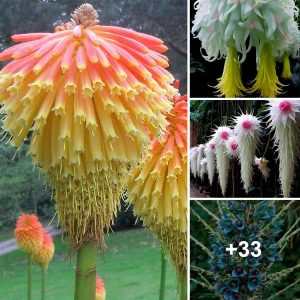The dragon tree, commonly known as the “Dracaena,” is a fascinating and resilient plant that belongs to the family Asparagaceae. With its unique appearance and adaptability, the dragon tree has captivated plant enthusiasts and decorators around the world.

Native to Africa, the dragon tree has long, slender leaves that resemble the shape of a sword or a lance. These leaves, often in shades of green or variegated with stripes of cream or red, give the plant an exotic and dramatic appeal. The dragon tree can grow to impressive heights, with some species reaching up to 20 meters in their natural habitat.

One of the remarkable features of the dragon tree is its ability to thrive in various environments. It can withstand drought conditions and adapt to both indoor and outdoor settings, making it a popular choice for both gardeners and indoor plant enthusiasts. Its resilience and tolerance to neglect make it an ideal choice for those who may not have a green thumb.

The dragon tree’s adaptability extends to its ability to tolerate different light conditions. While it prefers bright, indirect sunlight, it can also tolerate low light conditions, making it suitable for various areas in homes or offices. However, it is important to avoid exposing the plant to direct sunlight, as it can scorch the leaves.

In addition to its aesthetic appeal, the dragon tree offers several benefits. Like other houseplants, it helps improve indoor air quality by filtering out pollutants and releasing oxygen. Furthermore, the dragon tree is known for its low maintenance requirements. It can withstand infrequent watering and can survive in a range of temperatures, although it thrives in temperatures between 18-24°C (65-75°F).
Propagation of the dragon tree is relatively straightforward. It can be grown from stem cuttings, which can be rooted in water or a well-draining potting mix. With proper care and attention, these cuttings will develop roots and eventually grow into new plants.





